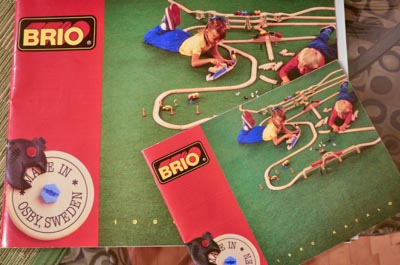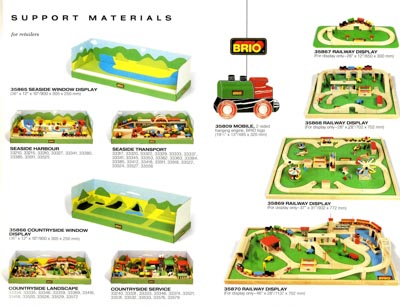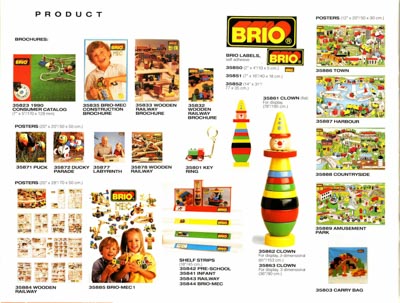The terms “dealer catalog” and “consumer catalog” are often times used interchangeably, but they aren’t always the same thing. See the photo below, which shows two BRIO catalog booklets for the year 1990.

These two books are nearly identical, though of course the difference in size is immediately obvious. The dealer catalog is the larger of the two, and certainly the more expensive to print. Since consumer catalogs were intended to be produced in much greater numbers, it would make sense that they would be made smaller so as to keep printing costs down.
There is more to this dealer catalog than just its larger size, however: there is also a slight difference in its content. While the product pages are identical between the two, the last two pages of the dealer catalog are devoted to campaign materials and other promotional items that are intended for use in retail store displays:


The consumer catalog has the same number of pages, but these final two pages are instead replaced with blank, ruled sheets:

The assumption here, of course, is that the average consumer would not be interested in expensive store displays and posters. Not so the collector, but of course the collector is not the average consumer.